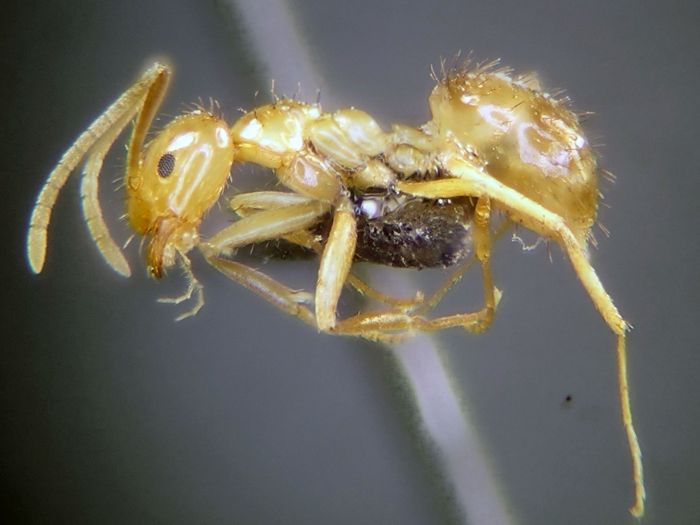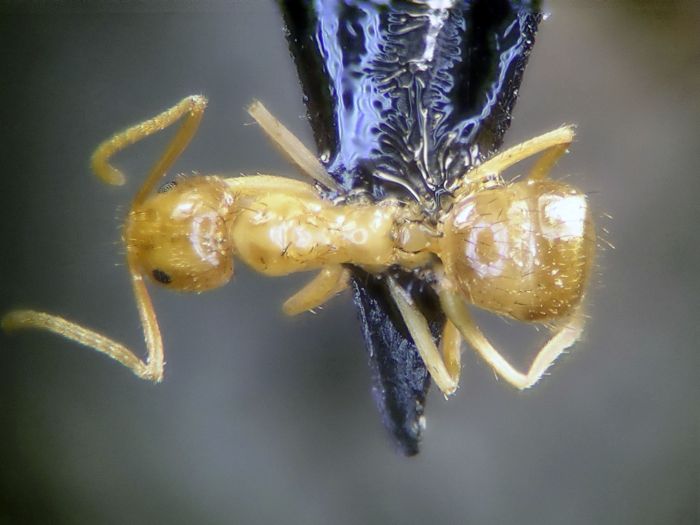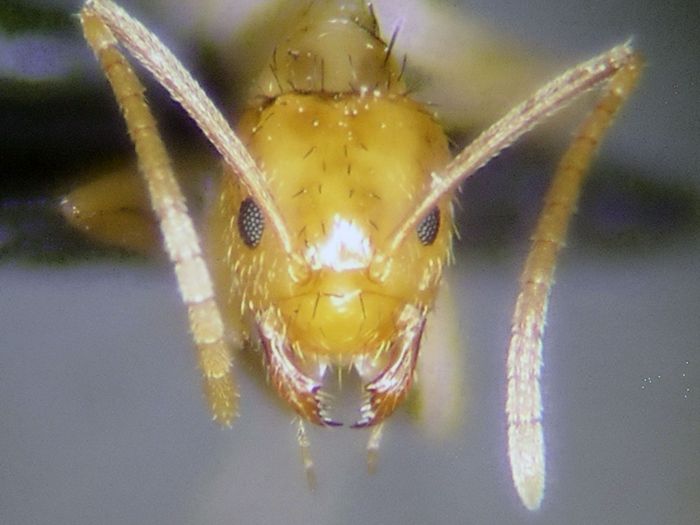Mercutia: I hate to interrupt your imagining that dramatic fight scene, but here's the answer to the question that followed:
The first person who adheres to the correct protocols of publication and type specimen designation and deposition is the author of the new species. This person's last name and the year of publication may follow the Latin binominal in some publications, e. g., Nylanderia hystrix Trager 1984.
If two different authors publish new names for what turns out to be the same species, the name that was published first gets priority, and becomse that species' only valid name.
Any other names become "synonyms". Synonyms also become unavailable for future use to name any other species - to avoid creating what are known as homonyms, two species that have the same name.
When two species are homonyms, the one described later has to be given a new name. Here's a little story to illustrate:
Once upon a time (in 1798), what we now call Camponotus chromaiodes (your favorite, right?) was originally described under the name Formica ferruginea.
But there was an earlier (1791) use of this same name to describe another ant (so the 1798 name became a homonym).
However, the 1791 Formica ferruginea turned out on later examination to be a synonym of Formica rufa.
So:
Formica rufa is the valid name for the ant we still know by that name.
Formica ferruginea of 1791 is the same as F. rufa, so that name can no longer be used for F. rufa, nor for any other ant species.
The Formica ferruginea published in 1798 turned out to be a Camponotus, a genus name published later on (1861).
Once Camponotus was invented, but because the synonymy mentioned above was overlooked, for a while the second F. ferruginea became known as Camponotus ferrugineus.
But then, just a few years ago (1995), it was discovered that the name Formica ferruginea was pre-occupied by a real Formica, so a new name had to be coined for the Camponotus, giving us the name by which we know the species today, Camponotus chromaiodes.
All clear?
Edited by James C. Trager, March 20 2015 - 1:12 PM.
























